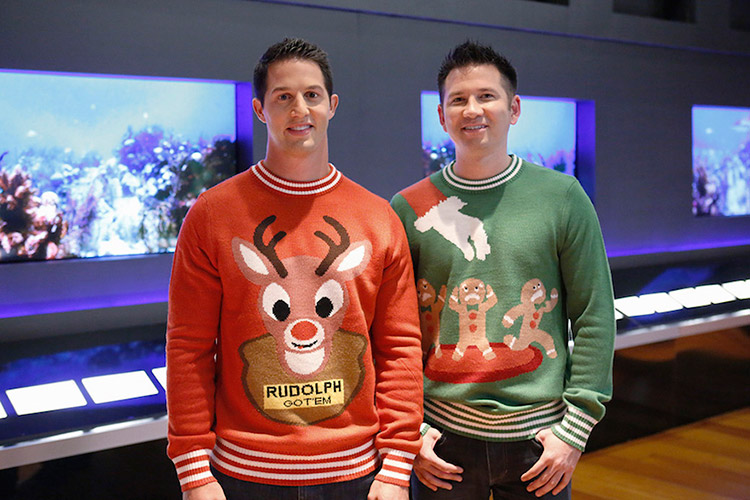Daily Business Report-Dec. 11, 2015
Tipsy Elves founders Nicklaus Morton (left) and Evan Mendelsohn.
UC San Diego Alums Turn Ugly
Christmas Sweaters into Booming Business
The “ugly Christmas sweater” has emerged as a holiday necessity, and according to Tipsy Elves founders Nicklaus Morton and Evan Mendelsohn, the trend is here to stay.
Their “ugly” Christmas sweater designs range from the family-friendly “nice,” to the humorously crude “naughty.” They also sell holiday-themed pajamas, onesies and socks. But the Elves don’t just cater to the Christmas holiday. With a growing fan base, they have expanded to include Halloween, Thanksgiving, St. Patrick’s Day and more.
Morton and Mendelsohn met as fraternity brothers at UC San Diego. The two came up with the idea to launch an ugly sweater line after countless trips to the thrift store left them empty-handed. “Both of us had been invited to several ugly Christmas sweater parties, but had trouble finding a sweater to wear,” says Morton.
With the growing holiday trend and lack of inventory in the market, Tipsy Elves successfully launched in 2011. In their first year, they sold approximately 5,000 sweaters in 12 gaudy designs. Morton, then an endodontist, and Mendelsohn, a former lawyer, ultimately abandoned their full-time careers and poured their entire life savings as well as their energy into making the company a success.

The tipping point for Tipsy Elves was a 2013 appearance on ABC’s Shark Tank. The entrepreneurially focused show not only gave them the exposure they needed, but it connected them with venture capitalist Robert Herjavec, now a business partner, mentor and friend. Prior to the show, the Elves had about $750,000 in sales. Today, they are projecting more than $10 million.
UC San Diego News Center
____________________________________________________
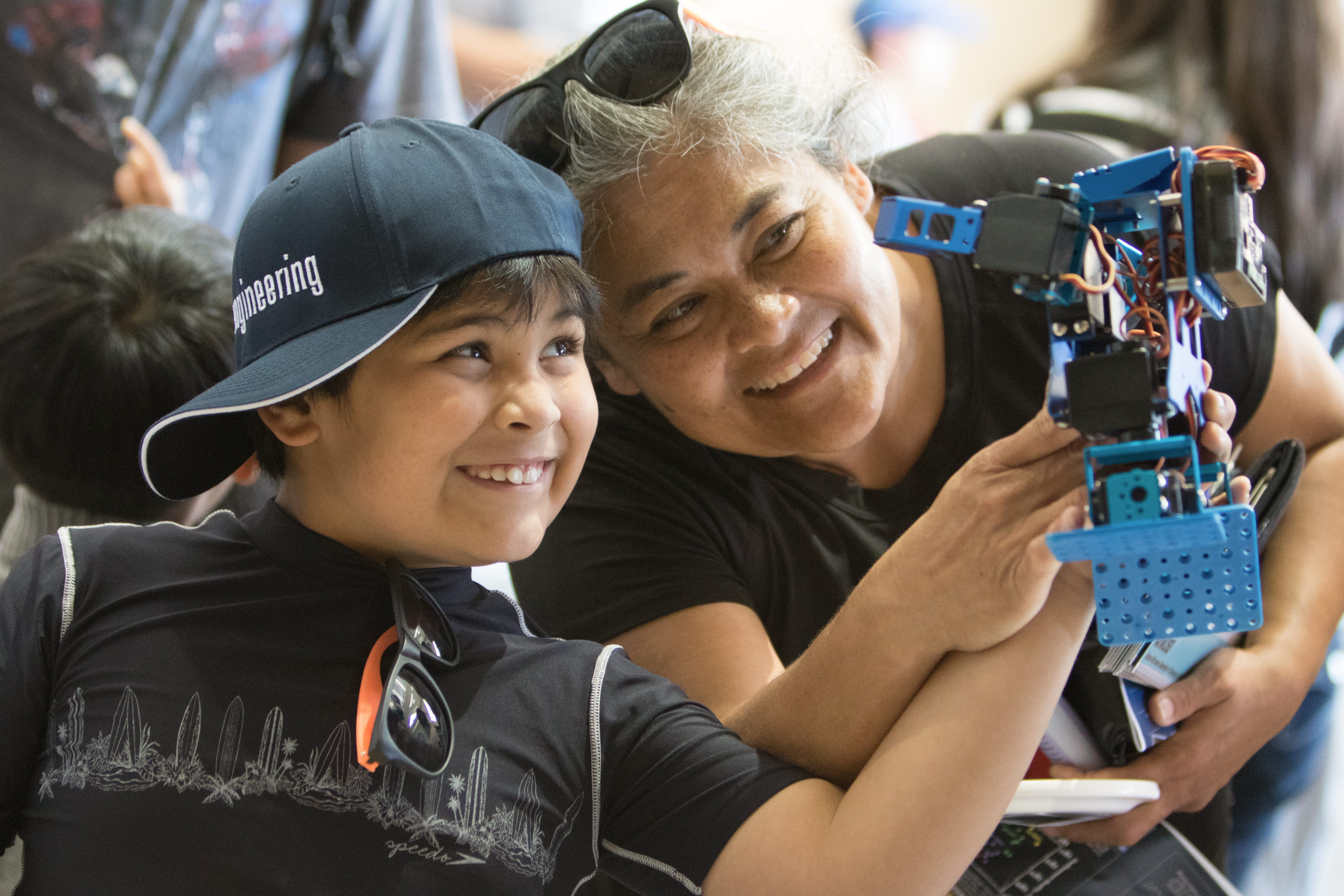
San Diego Festival of Science & Engineering
To Kick Off with Expo Day March 5 at Petco Park
Eight days of festival events to follow
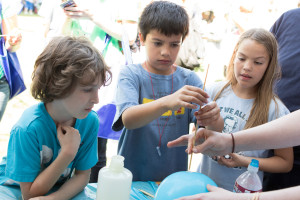
The eighth annual San Diego Festival of Science & Engineering will hold its Expo Day on March 5 at Petco Park followed by festival events March 6-13 at various locations throughout San Diego County.
Expo Day and Festival Week features interactive demonstrations, hands-on activities and speakers to engage kids and families in science, technology, engineering and math (STEM) education.
“Our festival is a catalyst to transfer that knowledge and collaboration to show students and their parents how science translates into careers and further fuels our economy in San Diego County,” said Sara Pagano, managing director. “The festival furthers our commitment to demonstrating that science and technology is in everything we do, every day.”
A program of the Biocom Institute, the festival aims to encourage and engage kids in STEM, and to inspire them to become tomorrow’s innovators.

Festival organizers are expanding their event schedule to appeal to adults ages 21 and up. “The 21+ series has been widely requested by many of our adult followers who share a continued passion and love for science,” said Pagano. “This new series, which is co-hosted by the Reuben H. Fleet Science Center, offers us a larger depth of impact in the community, in addition to the opportunity to expand our work with some wonderful new partners.”
During Expo Day, more than 130 local businesses, corporations and organizations will provide interactive, hands-on science, technology, engineering and math exhibits and activities to budding K-12 science lovers. Festival Week will feature eight days of learning, interaction and behind-the-scenes opportunities for grades kindergarten through 12th grade, and their families.
___________________________________________
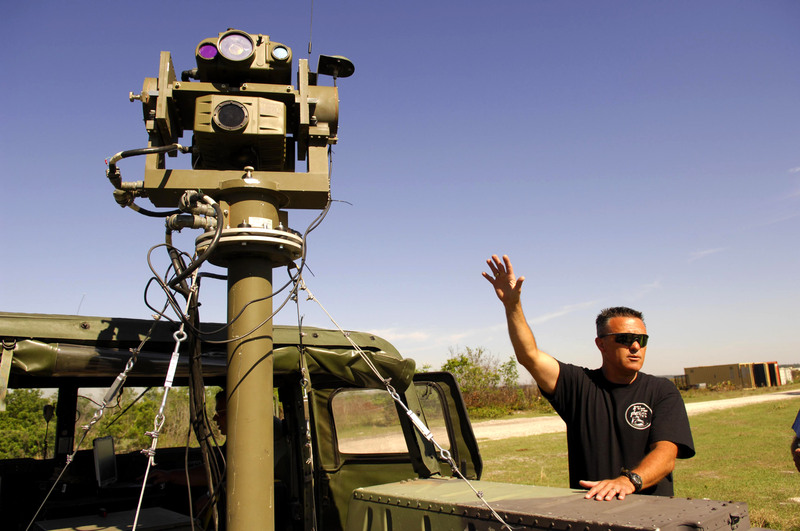
Army Tests Venom System to Kill Drones;
System Incorporates Northrop Grumman’s Rangefinder
The US Army’s new Venom detection and tracking system to destroy drones has been successfully demonstrated at military maneuvers, defense contractor Northrop Grumman said in a press release.
Venom is a ground-based targeting system that incorporates Northrop Grumman’s Lightweight Laser Designator Rangefinder to provide target designation for delivery of precision-guided munitions.
“At the Army Maneuver-Fires Integrated Experiment held at Fort Sill, Okla., Northrop Grumman’s Venom demonstrated the ability to identify and track small unmanned aerial systems (UAS) and to provide accurate targeting data while on the move,” the release stated.
In the test, the Venom system supported counter-drone functions from two vehicles, providing precision target coordinates for fire support then locked onto and tracked low-flying, small unmanned aircraft, the release added.
“Adding counter-UAS and on-the-move targeting will give our warfighters greater flexibility in mission planning and execution,” said Kay Burch, vice president of communications, intelligence and networking solutions at Northrop.
UCSD: Microbes Can Help
Determine Time of Death
City News Service
Researchers at the UC San Diego School of Medicine announced Thursday that microbes can be used to provide a relatively accurate estimate of the time of death in decomposing human bodies.
The method could also be used to determine the original location of bodies that were moved and help locate buried corpses, according to a study published in the online edition of Science.
“We feel there is great promise that our findings could be used by forensic scientists,” said Jessica Metcalf, staff research associate at UCSD and the University of Colorado-Boulder. “We view it as a potential method that could be used with other lines of evidence by investigators attempting to solve suspicious crimes.”
Establishing a time of death is frequently a critical component in determining a defendant’s guilt or innocence in a murder case.
Currently, investigators determine the time of death by studying blowflies, which lay eggs that develop as larvae in known time increments. The actions of blowflies, however, can be affected by weather conditions.
The human body harbors up to an estimated 100 trillion microbes — as many as 10 times the number of human cells in the body — that perform functions ranging from food digestion to strengthening the immune system.
The research team led by Metcalf and UCSD professor Rob Knight used a gene-sequencing technique to chart microbes present on cadavers and associated soils immediately following death.
“Advances in genetic sequencing technologies now allow us to find patterns in large, diverse populations of microorganisms, see how they associate with specific individuals, and understand how they change over time — in a way we couldn’t just a few years ago,” said Knight, who leads the UCSD Microbiome and Microbial Sciences Initiative.
San Diego Alzheimer’s Organization
Separates from National Association
The board of the San Diego chapter of the Alzheimer’s Association announced that it has decided to separate from the National Alzheimer’s Association. A new, locally-operated organization has been formed in order to best serve those affected by Alzheimer’s and dementia in San Diego.
The new entity, Alzheimer’s San Diego, will take over the programs and partnerships under local direction.
The decision to disaffiliate from the National Alzheimer’s Association was necessitated when the national Alzheimer’s Association voted to consolidate all of its independent affiliates into a single nonprofit entity controlled from its Chicago headquarters. “Chapters did not have a meaningful say in the decision; in fact, half of the 54 independent chapters expressed their desire to remain independent affiliates — a preference that went unheeded by the national board,” according to the local chapter.
The local chapter said restructuring would have severely jeopardized the San Diego chapter’s ability to provide the quality and level of service the community has relied on for more than 35 years. The local governing board and all local decision making would have been turned over to individuals thousands of miles away in Chicago.
“Every year, we provide services to tens of thousands of San Diegans with the disease and those who are caring for them,” said Alzheimer’s San Diego President and CEO Mary Ball. “There will be no disruption of service. We will remain the premiere organization in San Diego focused on care and support and advancing critical local research for a cure.”
San Diego Region Achieves 15 percent
Water Savings in November
San Diego County continued its streak of significant water savings in November, when urban potable water use decreased by 15 percent compared to November 2013, according to the San Diego County Water Authority.
Since the start of state-mandated emergency water savings in June, regional water consumption has declined by 24 percent compared to the state’s baseline period in 2013, beating the regional aggregate target of 20 percent.
“Irrigation typically declines during the late fall and winter months, and that makes it more challenging to achieve year-over-year reductions,” said Dana Friehauf, water resources manager for the Water Authority. “People just don’t water their yards as much, so there’s less discretionary water use to cut. While the region remains on track to meet the state’s cumulative water-savings goal through February, it’s important that residents and businesses keep looking for ways to save water indoors and outdoors in coming months. Thousands of seemingly small actions add up over time, and they will help the San Diego region continue to do its part.”
November Home Sales in San Diego Plunge Again
City News Service
The number of home sales in San Diego continued to plunge last month, on both a monthly and annual basis, according to figures released Thursday by the San Diego Association of Realtors.
Just over 1,400 single-family homes sold in November, down 25 percent from October and 7 percent lower than November 2014, the SDAR reported. For attached homes like condominiums and townhouses, 738 changed hands last month, down 24 percent from the month before, and 3 percent lower than the same month last year.
Stronger sales earlier this year make for a more positive long-term picture, according to the association. Despite declining sales this fall, the number of houses that changed ownership is up 8 percent over 2014, while condo sales are up 10 percent year-to-date.
The median price of a house sold last month was $539,000, up 3 percent over the month before and 10 percent above the figure in November 2014, according to SDAR stats. For condos, the median sales price in November was $340,000, 4 percent lower than October but 6 percent higher than the same month last year.
“We aren’t seeing any monster growth in home prices, which will be a good thing to maintain economic stability in the region,” said SDAR board President Chris Anderson. “Inventory and affordability are the other side of the spectrum, and both are keeping our home sales from shaking loose.”
The most expensive listing sold in the county in November was a five- bedroom, eight-bath, 9,100-square-foot home on the coast of La Jolla, built in 1996, with a sale price of $12 million.
NuVasive Selects Ohio Site
For New Manufacturing Plant
NuVasive Inc., a medical device company in San Diego, announced that the company has selected a site in West Carrollton, Ohio as the location for the build-out of its new medical device facility dedicated to spinal implant and instrument manufacturing.
The new facility would support the company’s efforts to increase its internal manufacturing capabilities alongside its existing manufacturing facility in Dayton, Ohio.
NuVasive said it has entered into an agreement to acquire the manufacturing site and plans to invest $45 million over the next 24 months to build-out and equip the new facility. The 160,000-square-foot facility is currently scheduled to begin commercial scale production by year-end 2016.
When at full scale, the new facility is expected to employ approximately 300 full-time, high-tech positions, including engineers and skilled machinists, as well as process development and validation specialists who will work with the company’s research and development teams to accelerate product launches.
The company’s headquarters remain in San Diego.
Westfield Funding Campaign
Against Strawberry Fields Project
City News Service
Once again in San Diego County a major developer is helping to finance a referendum campaign against another developer’s project, in this case a retail and dining center planned in Carlsbad’s strawberry fields.
Westfield Corp. announced Wednesday that it is donating $75,000 to Citizens for North County’s No on Measure A campaign, which seeks to prevent a development supported unanimously by Carlsbad’s mayor and city council.
Los Angeles mall developer Caruso Affiliated plans to build an upscale shopping and dining center while preserving 85 percent of about 203 acres of open space near Interstate 5 and Cannon Road. Much of the property has been used for decades to grow strawberries, though it is zoned for commercial and retail development.
Westfield recently sold its mall in Carlsbad, but said Thursday it was supporting a no vote in the referendum because it wanted to ensure that California’s environmental review process is fair to all parties.
CORRECTION
Zephyr reported Thursday that there were two inaccuracies in its announcement of the sale of The Block to Bosa Development. The planned development at the site will not include a boutique hotel, as originally reported, and the number of residential units will be 498, not 550 as originally reported.
Personnel Announcements
Housing Federation Hires Executive Director
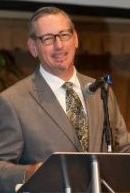
San Diego Housing Federation board has appointed community activist Stephen Russell as the agency’s new executive director. Russell will assume the post on Dec. 15.
Russell’s experience includes public sector, community development and business experience. Most recently he worked with the architectural firm of Platt/Whitelaw Architects where he led a team on a sustainability plan for North Park Main Street. Previously, he led the El Cajon Boulevard Business Improvement Association as executive director.
Russell was a board member of the City Heights Community Development Corporation and served as board president for five years. He has served on numerous other boards, including the New School Foundation. ‘
Civic San Diego Hires Chief Financial Officer
Civic San Diego has named Robert Avery as its new chief financial officer.
Avery has more than 15 years of experience in financial management for profit and nonprofit organizations. For the past five years he was chief financial officer in the California Regional Center System at the San Andreas Regional Center and Redwood Coast Regional Center.
Prior to his tenure in the California Regional Center System, Avery served as senior financial analyst for ICx Tactical Platform, RBS Lynk and GMAC Insurance. He also served as the Budget Manager for the American Red Cross in Washington, D.C

